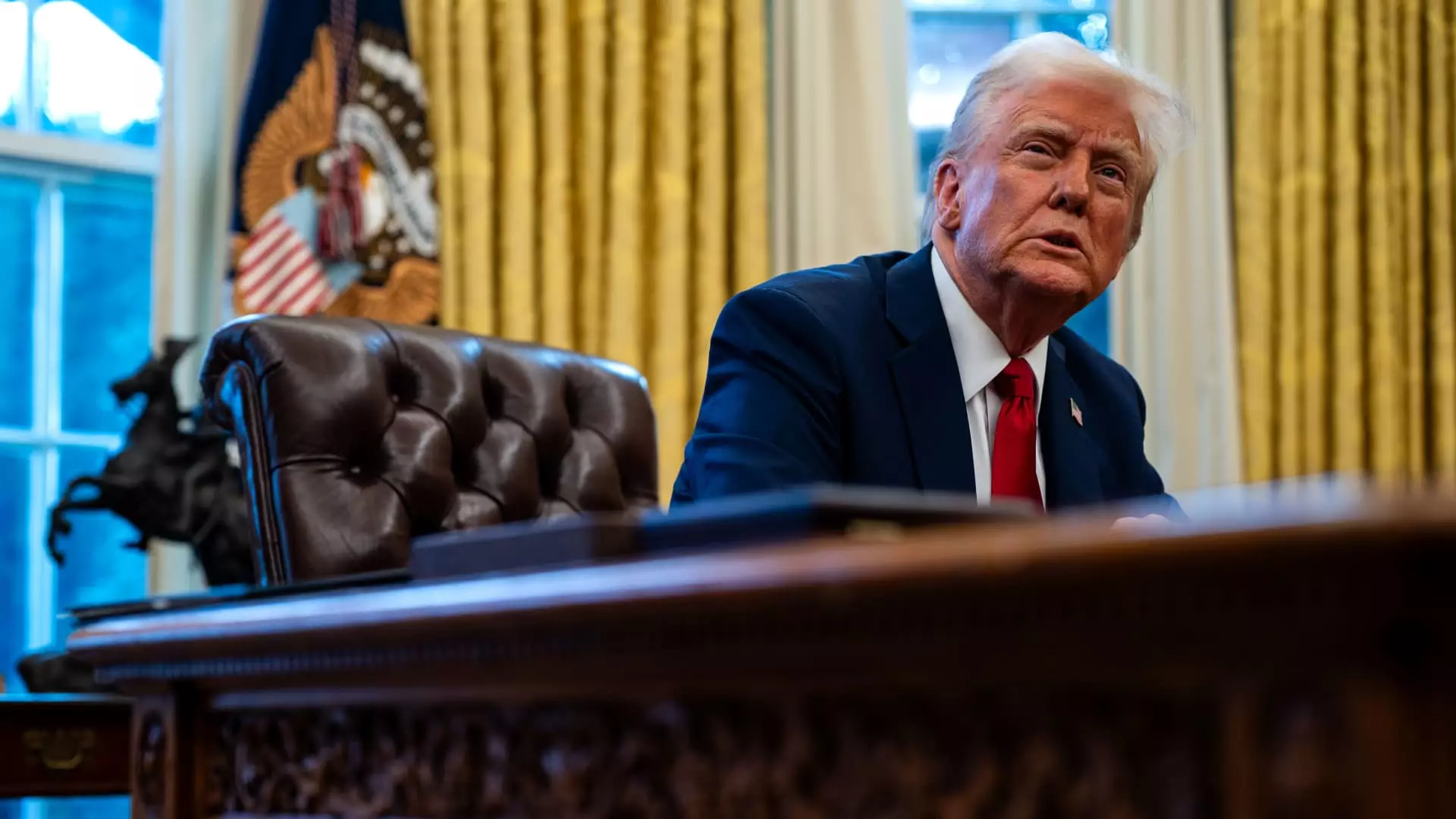In a move likely to reshape the economic landscape of North America, former President Donald Trump has announced the imposition of a 25% tariff on imports from Mexico and Canada, effective February 1. This significant policy decision aligns with Trump’s longstanding rhetoric surrounding trade, underscoring a broader strategy aimed at addressing what he perceives as unfair trading practices and economic imbalances with neighboring nations. As these tariffs loom on the horizon, both immediate and latent repercussions are reverberating through the trade relations of these three nations.
Trump’s assertion that the tariffs are a response to various grievances—including immigration concerns, rampant drug trafficking, and what he claims are substantial subsidies extended to these countries—is emblematic of a combative trade policy. His administration’s contemplation over whether oil imports would be included in these tariffs reveals a strategic consideration that maintains leverage over a vital resource both countries supply. However, Trump’s statement that the oil tariffs are contingent upon pricing positions his administration’s policy as not only punitive but also opportunistic.
The decision to enforce tariffs in a protectionist gesture raises significant concerns regarding its impact on consumers within the U.S. The theorized economic model suggests that such tariffs will ultimately inflate prices for American consumers, as increased costs for imports are often passed down to end-users. This inflationary effect is expected to exacerbate already challenging economic conditions, especially as many sectors heavily rely on cross-border supply chains for essential goods.
Furthermore, the Mexican and Canadian responses signal an impending trade conflict. President Claudia Sheinbaum of Mexico has indicated that reciprocal tariffs would be a feasible response to U.S. measures, while Canadian Minister of International Trade Mary Ng remarked that Canada would keep all options on the table, potentially including export taxes on energy. The reciprocal nature of these tariffs could not only lead to increased consumer prices across North America but also deteriorate overall trade relations, stunting economic growth.
The political motivations behind Trump’s tariffs cannot be overlooked. By framing tariffs as a tool for national security and economic fairness, he garners support among his base, capitalizing on widespread sentiments of disenfranchisement regarding trade policies that have prioritized globalization over domestic needs. The narrative surrounding protecting American jobs and combating drug trafficking likely resonates with his supporters, reinforcing the appeal of such protectionist measures.
However, the potential fallout from these tariffs stretches beyond immediate voter sentiment. Economic analysts have warned that the sustained implementation of such tariffs could lead to retaliatory measures from both Canada and Mexico. Historical precedent indicates that trade wars often spiral out of control, leading to long-term economic repercussions that can stifle growth and innovation. The risk of falling into a trade spiral that harms all parties involved remains an ever-looming concern.
In the lead-up to the tariff implementation, markets have shown signs of volatility as they react to the uncertainty created by Trump’s tariffs. On one side, commodities such as oil—a critical element of trade with both Canada and Mexico—exhibited slight increases, reflecting cautious optimism or speculative trading rather than substantive economic health. The implications for the Canadian dollar and Mexican peso present a complicated picture where immediate gains against the U.S. dollar suggest market resilience, but underlying economic realities indicate vulnerability.
As the reality of the tariffs comes closer, businesses and policymakers on all sides must brace for potential disruption. Trade-dependent sectors could see immediate challenges, and consumers across the region may begin to feel the impact of rising prices. Such scenarios call for increased diplomacy and dialogue among these nations to seek mutually beneficial resolutions rather than escalating conflicts.
In essence, Trump’s tariffs serve not only as a mechanism for addressing economic grievances but as a litmus test for the viability of cooperation across North America in an age marked by rising protectionism. The coming months will be essential in determining the trajectory of trade relations and the overall economic health of the region amidst these newfound tensions.


Leave a Reply